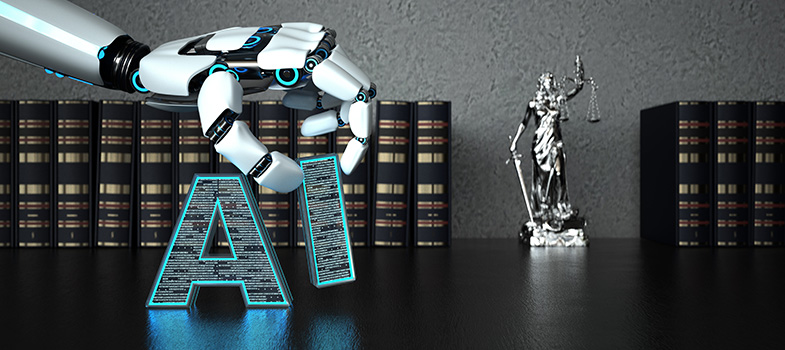Special | A | B | C | D | E | F | G | H | I | J | K | L | M | N | O | P | Q | R | S | T | U | V | W | X | Y | Z | ALL
A |
|---|
AI agentsSoftware systems that can perceive their environment, make decisions,
and take actions to achieve specific goals, autonomously using AI. | |
AI literacyA framework to critically understand, evaluate and use new technologies
and one that requires a ‘self-reflective mindset’. | |
AI personaA tailored set of characteristics, mannerisms, key skills and behaviours
that you want the AI to adopt during your interaction. | |
AlgorithmAn algorithm is a step-by-step procedure for solving a problem or
performing a task. It is a set of rules or instructions that a computer follows
to achieve a specific goal. | |
Application areasApplication areas are the specific fields or domains where AI
technologies are applied. Examples include healthcare, finance, transportation,
and entertainment. | |
B |
|---|
BackpropagationBackpropagation is a training algorithm for neural networks. It adjusts
the weights of the network by propagating the error backwards from the output
layer to the input layer, improving the model's accuracy. | |
BiasSystematic errors or distortions in the outputs of an AI system which reflect
or reenforce discriminatory patterns or stereotypes. This is often due to underlying
issues in the training data of an AI system (also see Prejudice). | |
Black box modelAn AI system whose internal workings are not easily interpretable or
transparent, even to its developers. | |
D |
|---|
Deep learningDeep learning is a type of machine learning that uses neural networks with many layers (deep networks) to analyse and learn from large amounts of data. It is particularly effective for tasks like image and speech recognition. | |
De-skillingOver reliance on GenAI tools will lead to people having fewer skills. | |
Digital divideThe patterns of unequal access to information technology based on income, race, ethnicity, gender, age, and geography. | |
E |
|---|
EthicsThe use of AI which
preserves trust and protects sensitive data through technical and
organisational measures. | |
Expert systemsExpert systems are AI
programs that mimic the decision-making abilities of human experts. They use a
knowledge base and inference engine to solve complex problems in specific
domains. | |
Explainability (of an AI)Explainability in AI
means making AI decisions understandable to humans allowing them to interpret
the decisions made by an AI system. It involves making providing clear
explanations for its actions and helps to improve trust and transparency. | |
F |
|---|
Fine-tuningA pre-trained neural
network is further trained on a specifically tailored set of data relevant to a
specific task or tasks. This improves
the AI performance on those tasks. | |
G |
|---|
Generative Artificial IntelligenceGenerative AI refers
to AI systems that can create new content, such as images, music, or text,
based on the data they have been trained on. These systems can generate
original and creative outputs. Examples include language models like GPT and
image generators like DALL·E. | |
Graphical Processing UnitsGraphical Processing
Units (GPUs) are specialized hardware designed for parallel processing. They
are widely used in AI and deep learning to accelerate the training of large
models. | |
Guard railsGuard rails in AI are safety measures designed to prevent harmful or unintended outcomes. They ensure that AI systems operate within acceptable boundaries and adhere to ethical guidelines. | |
H |
|---|
HallucinationsAnswers produced by
Generative AI which are inaccurate, misleading or nonsensical. | |
For further information, take a look at our frequently asked questions which may give you the support you need.
If you have any concerns about anything on this site please get in contact with us here.



